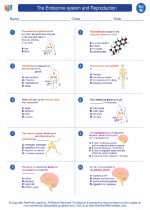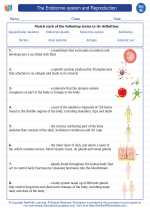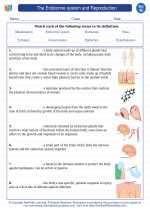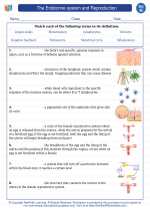Defense in Science
Defense mechanisms are strategies developed by living organisms to protect themselves from potential harm or danger. In biology, defense mechanisms can be found at various levels, including cellular, tissue, organ, and organismal levels. These mechanisms help organisms to survive and thrive in their environments.
Study Guide: Defense Mechanisms
- Physical Barriers: The first line of defense in many organisms is the presence of physical barriers such as skin, shells, or tough outer coverings. These barriers prevent the entry of harmful pathogens and foreign substances into the body.
- Immune System: The immune system is a complex network of cells, tissues, and organs that work together to defend the body against harmful invaders. This includes the production of antibodies, white blood cells, and other specialized cells that recognize and target foreign substances.
- Chemical Defenses: Many organisms produce chemicals that act as natural defenses against predators or pathogens. For example, plants may produce toxins to deter herbivores, while some animals have venomous secretions for protection.
- Behavioral Adaptations: Organisms may also exhibit behavioral adaptations for defense. This can include fleeing from predators, camouflage, or forming social groups for protection.
- Adaptive Immunity: In more complex organisms, such as vertebrates, the immune system can develop adaptive immunity, which involves the recognition of specific pathogens and the production of memory cells for long-term defense.
- Cellular Defenses: Within individual cells, various defense mechanisms exist, including the ability to repair damaged DNA, eliminate harmful molecules, and undergo programmed cell death (apoptosis) to prevent the spread of infections or diseases.
Understanding the diverse defense mechanisms in living organisms is crucial for comprehending the interactions between organisms and their environments, as well as for developing strategies to combat diseases and protect ecosystems.
[Defense] Related Worksheets and Study Guides:
.◂Science Worksheets and Study Guides Eighth Grade. The Endocrine system and Reproduction
Study Guide The endocrine system and Reproduction
The endocrine system and Reproduction  Worksheet/Answer key
Worksheet/Answer key The endocrine system and Reproduction
The endocrine system and Reproduction  Worksheet/Answer key
Worksheet/Answer key The endocrine system and Reproduction
The endocrine system and Reproduction  Worksheet/Answer key
Worksheet/Answer key The endocrine system and Reproduction
The endocrine system and Reproduction  Vocabulary/Answer key
Vocabulary/Answer key The endocrine system and Reproduction
The endocrine system and Reproduction  Vocabulary/Answer key
Vocabulary/Answer key The endocrine system and Reproduction
The endocrine system and Reproduction  Vocabulary/Answer key
Vocabulary/Answer key The endocrine system and Reproduction
The endocrine system and Reproduction  Vocabulary/Answer key
Vocabulary/Answer key The endocrine system and Reproduction
The endocrine system and Reproduction  Vocabulary/Answer key
Vocabulary/Answer key The endocrine system and Reproduction
The endocrine system and Reproduction 

 Worksheet/Answer key
Worksheet/Answer key
 Worksheet/Answer key
Worksheet/Answer key
 Worksheet/Answer key
Worksheet/Answer key
 Vocabulary/Answer key
Vocabulary/Answer key
 Vocabulary/Answer key
Vocabulary/Answer key
 Vocabulary/Answer key
Vocabulary/Answer key
 Vocabulary/Answer key
Vocabulary/Answer key
 Vocabulary/Answer key
Vocabulary/Answer key
